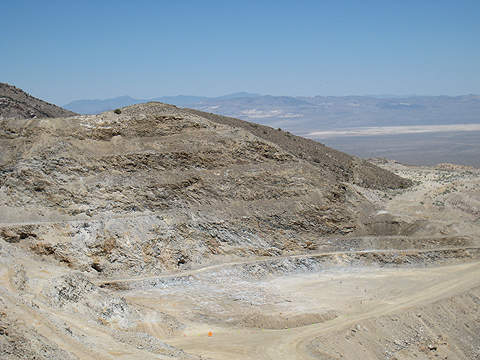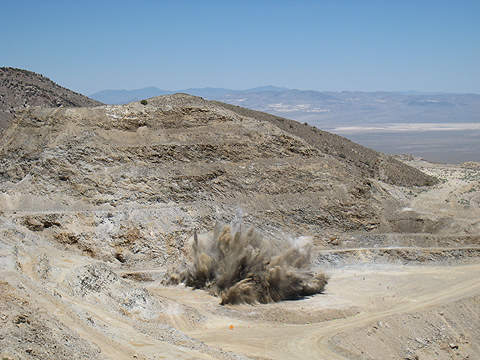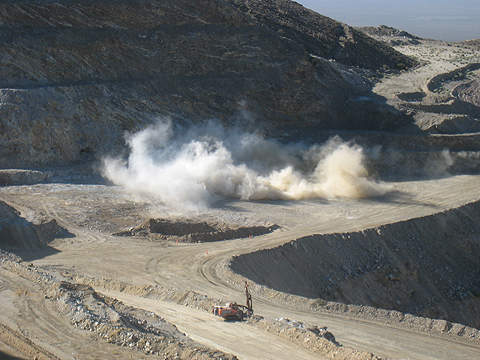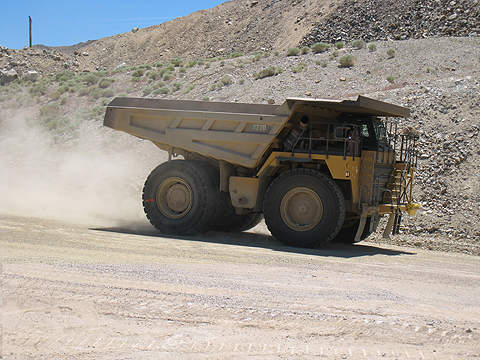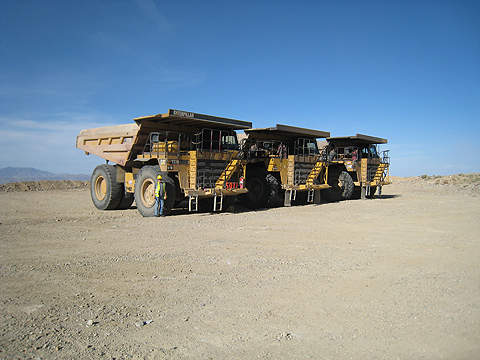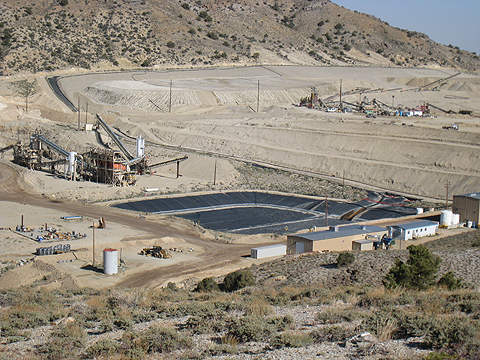The Mineral Ridge gold mine is located in Esmeralda County, Nevada. The property was discovered in 1864 and mined until 2005, including small scale mining between 1945 and 1987 and open pit mining between 1989 and 2005. The mine historically produced 575,000oz of gold including 405,000oz from underground operations and 170,000oz from open pit.
The mine will be developed by Mineral Ridge Gold, a joint venture between Golden Phoenix (30%) and Scorpio Gold US (70%). Golden Phoenix acquired the property from the Vista Chapter 11 bankruptcy trustee in 2000. The joint venture with Scorpio Gold was finalised in 2010.
Mineral Ridge gold mine contains 4.6 mt
The property holds permits for large scale gold production. Due to the presence of significant gold in the heap leaches, Scorpio Gold expects to convert the property into a commercial asset.
The combined resources in both Drinkwater and Mary open pits have been estimated to be 4.6 million tons (mt) graded at 1.462g/t Au. Cumulative inferred resources at Drinkwater and Mary open pits amount to 3.7mt grading at 1.120 g/t Au.
The deposit lies within the northeast edge of the Silver Peak Mountain Range, located within the Walker Lane. The Walker lane is a 100km wide corridor that divides the Sierra Nevada batholith to the west and southwest and the Great Basin to the east and northeast.
Seven gold bearing mines discovered at Nevada site
The deposit is an anticlinal dome interpreted as an elevated altered core sequence. The base of the deposit is formed by metasediments of the Wyman Formation.
The Wyman Formation hosts phyllite, calc-silicate, marble, limestone, and minor, fine grained quartzite and is overlain by Reed dolomite. The Reed dolomite lies under lime stones, dolomites and siliciclastic rocks of the Deep Springs Formation.
Gold bearing quartz structures hosted in the central gold-quartz district are conformable with foliation in the host rocks of the Wyman Formation.
The geological contact between quartz and alaskite, and alaskite and peraluminous two-mica granite is transitional, indicating that alaskite, quartz and ore metals have been hydrothermally formed from residual granite melt and aqueous fluids. Seven gold bearing mines have been outlined at the property.
They include the North-Northeast Eagles Nest Fault, the North-Northeast Coyote Fault, the Northwest BW Normal Fault, the North-Northwest Gillian Fault, the Northeast Mary/Drinkwater Cross Fault, the North-Northwest Mary/Drinkwater Cross Fault and the North-Northwest Black Warrior Intersection Fault.
Mineralised zones up to 43m thick
Mineralised zones are up to 43m thick, consisting of higher grade, between 1.5m and 9m wide halo enveloped by lower grade mineralisation.
The mineralisation extends up to 4,300m north-south and 4,600m east west. The highest grade material is found within mineralised shoots that are hosted at an oblique angle to the direction of the upper plate slab’s movement.
Mining will take place from the Mary and Drinkwater pits. Located at extreme ends of the same deposit, these pits will be combined to form a large pit.
Long history of production at gold mine pits
Historic exploration at the property dates back to 1939. Till 1995, up to 1,498 holes totalling 233,391ft of depth were drilled in 11 campaigns. Between 1996 and 1999, drilling of 240 reverse circulation (RC) holes extending 45,898ft was completed. Golden Phoenix drilled 54 RC holes extending 30,970ft in 2008.
A three-phase drilling program is underway for 2011. The drilling program will expand and upgrade the existing mineral resource estimate near the existing pits, delineate additional open pits and target several gold-bearing mineralised ore bodies which were discovered during the company’s surface exploration program.
Ledcor CMI awarded annual mining services contract
The mining services contract was awarded to Ledcor CMI in May 2011. The contract includes drilling, blasting, loading and hauling of material. The contract is up to 1 May 2012, after which it will be renewed annually till the end of the project.

